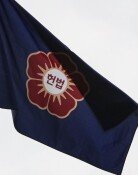10-minute-long P.E. class
10-minute-long P.E. class
Posted May. 09, 2020 07:57,
Updated May. 09, 2020 07:57
Physical education has been put on the back burner in the South Korean school system that focuses excessively on college entrance exams. Some critics argue that online classes in place due to the COVID-19 pandemic have limitations. For example, middle school seniors at a school in Seoul watch a two-minute-long national physical exercise program, a six-minute-long women's volleyball match between South Korea and Japan and take a quick quiz. Wrapping up a self-offered P.E. class in just 10 minutes, students rush into math and English assignments given by cram schools.
Obviously, not all the online P.E. classes are put in place in lousy and poor manner. Some hardworking teachers interact with their students and provide them with well-prepared material. However, P.E. teachers may find it harder to offer their students quality education particularly in front of the screen as physical training per se requires face-to-face interaction. It is little wonder that no one cares P.E. classes during the COVID-19 outbreak, which have always been neglected in school education.
In a 2019 survey on participation in sport and physical recreation by the Ministry of Culture, Sports and Tourism, teenage groups turned out to have the lowest sporting participation rate (more than once a week) of 50.1 percent among all the age groups. Added to that, South Korean teenagers ranked lowest in terms of how much physical activity they engage in on a daily basis, 94.2 percent of which answered less than one hour a day, according to a survey of teenagers aged 11 to 17 in 146 countries announced last November by the World Health Organization. Researchers at Cardiff Metropolitan University in Britain found out that those who engage in physical activities from middle and high school to college are likely to have far lower risks of obesity and cardiovascular diseases and continue doing athletic activities more actively even after they become grown-ups than those who don’t.
South Korean schools reopen by grade starting from next Wednesday. Indoor physical training programs are prohibited for some time as part of efforts to prevent the spread of against COVID-19. Teachers and students are required to wear masks at school, which is desirable to take such preventive measures. Nevertheless, P.E. sessions should not be relegated to study hall. As physical activity boosts immune systems, health experts advise carrying out face-to-face P.E. programs where individual students maintain a certain distance. It is urgent to build educational infrastructure and create content so that P.E. can be provided both in online and offline manner. In this light, corresponding authorities should promote sports clubs and expand athletic facilities.
One hundred years ago, the Dong-A Ilbo featured an article on the first page, saying, “Physical improvements in citizens’ health should be driven by personal hygiene and physical activity. In that sense, providing physical education is one of the most effective ways. In particular, physical education matters to the next generations or teenagers. It should be given more priority at school than it is now. It is encouraging that elementary school students and teenage girls have recently spent more time on physical activities. Having been written a long while ago, in October 1923, the article titled “P.E. and athletics” still resonates with us. Today’s COVID-19 outbreak has completely changed our daily lives. School P.E. also needs new ideas and innovation to reinvent itself. When children can become more active physically, our society will become a healthier place in general.
Jong-Seok Kim kjs0123@donga.com
Headline News
- Med professors announce intention to leave hospitals starting Thursday
- Bridge honoring Sgt. Moon Jae-sik unveiled in Pennsylvania
- Chief of Staff Chung tells presidential secretaries to stay away from politics
- US FTC bans noncompete agreements
- N. Korea launches cyberattacks on S. Korea's defense companies







